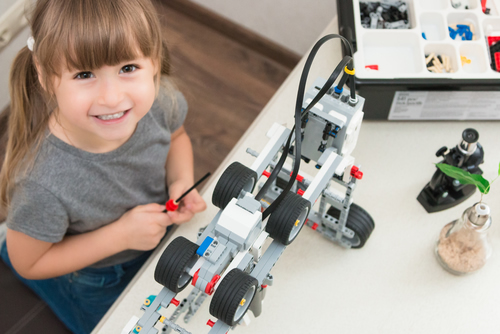More than half of today’s adult workers (62 percent) say they were never exposed to STEM-related studies and career possibilities in elementary school, according to a survey from littleBits and YouGov.
The findings support other research indicating that early exposure to STEM courses helps students stick with these studies even as the material becomes more challenging in high school and college.
U.S. workers with 1-2 years of STEM workforce experience say they had the highest exposure to STEM concepts in elementary school–46 percent of adults in this group experienced a science- or math-related track in school, and 53 percent of this group are working in a job that either entirely or heavily involves STEM.
Much research points to the worrisome prediction that the U.S. will not have produced enough highly-skilled workers to fill STEM jobs in the next few years. Those worries are compounded by the fact that many STEM jobs in the future don’t exist today–the Department of Labor estimates 65 percent of today’s students will find themselves in such jobs. Students will need an array of STEM skills to tackle those positions.
Two out of 5 Americans believe the STEM worker shortage is at crisis levels, according to results from the fourth annual STEM survey by Emerson, released in August.
Students today are twice as likely to study STEM fields compared to their parents, the number of roles requiring this expertise is growing at a rate that exceeds current workforce capacity. In manufacturing alone, the National Association of Manufacturing and Deloitte predict the U.S. will need to fill about 3.5 million jobs by 2025; yet as many as 2 million of those jobs may go unfilled, due to difficulty finding people with the skills in demand.
The need for encouragement is particularly great among girls and minority students, according to the littleBits survey. Girls are 5 percent less likely to recall learning STEM concepts between the ages of 5-12–only 18 percent of girls recall such exposure, while 23 percent of boys say they remember learning about STEM at this age.
Girls tend to lose interest in STEM as they move into middle school, but research suggests linking STEM with real-world problems motivates girls more because they feel they are helping others. STEAM is another engaging method, because it lets children use creativity in STEM problem-solving.
Microsoft research provides some interesting insights into the lack of girls in STEM classes and careers–including the idea that only 60 percent of girls understand how STEM subjects are relevant for their personal and professional pursuits. Multiple studies show that girls value helping people over making money or working with things, and this is not the case with boys, the littleBits study points out.
Research from the National Girls Collaborative Project shows that gender disparities become even more stark in college, when women’s participation in science and engineering varies drastically by specialization. In general, women receive far fewer degrees in computer science, engineering, physical sciences, and mathematics.
It seems children learn best by doing, because 64 percent of those surveyed say hands-on lessons were most effective. Older STEM workers didn’t have the same engaging learning experiences, though.
“Worksheets and textbooks were the most popular method for learning STEM among those that have been in the workforce for 20 years or more. These previous lessons were static and one-dimensional. New workforce entrants, on the other hand, recall learning [these] topics through creative activities, like arts and crafts,” according to the survey.
Elementary-level STEM has the followed characteristics: Hands-on exploration that lets students play, explore, and invent; integration of two or more subjects; real-world connection that links lessons to actual problems and solutions; and the use of technology to facilitate learning.
- 4 ways to support work-based learning - April 23, 2024
- Prioritizing inclusivity in game-based learning - April 22, 2024
- Friday 5: Universal Design for Learning - April 19, 2024


